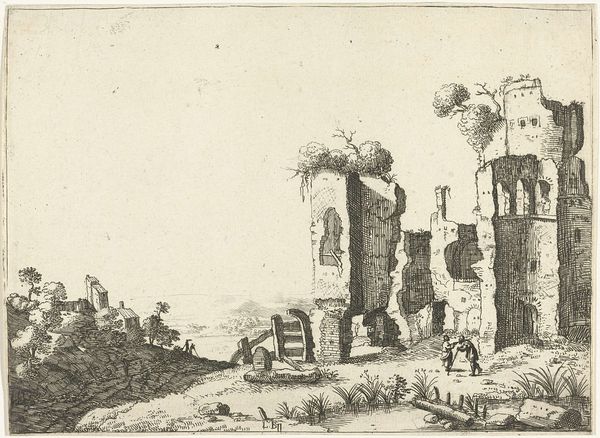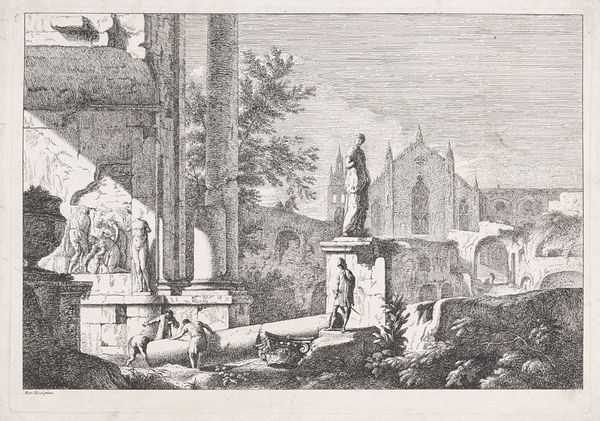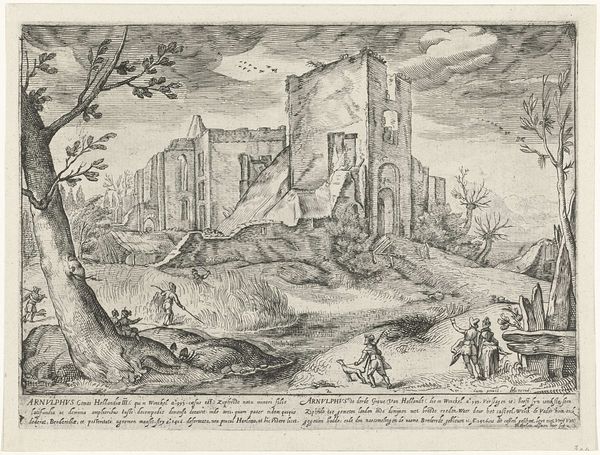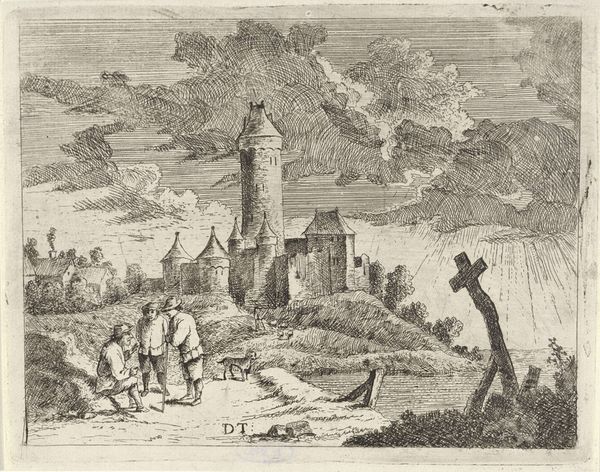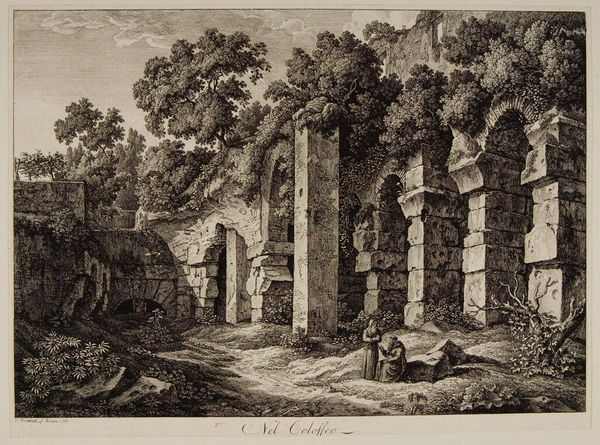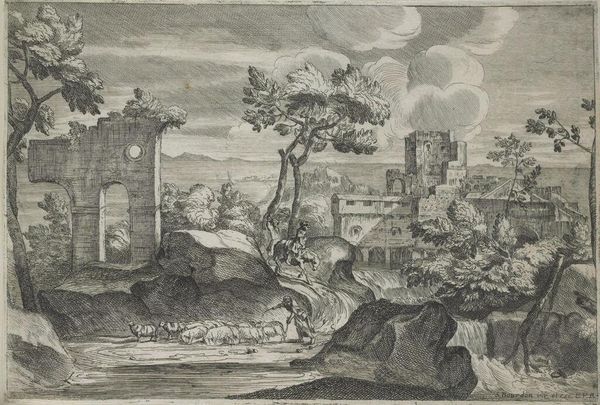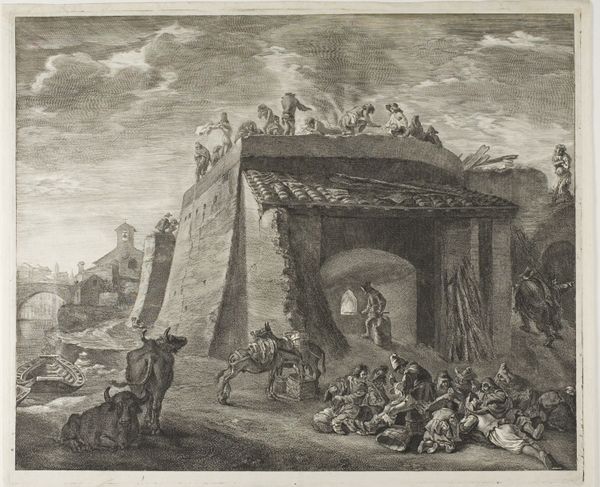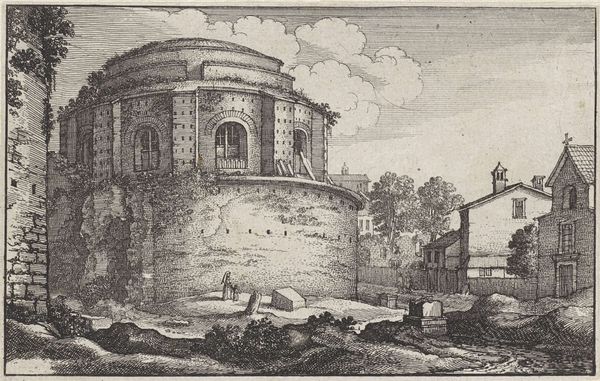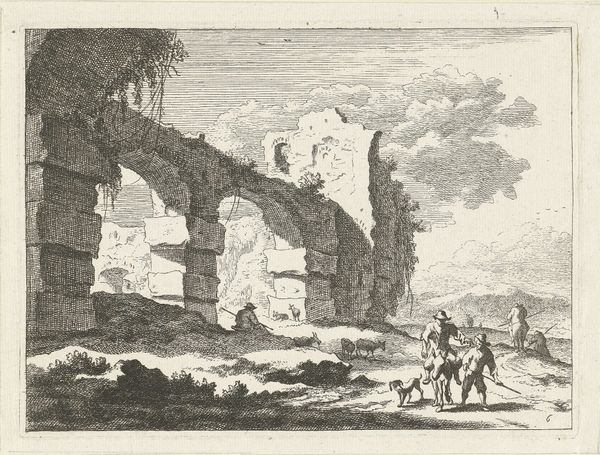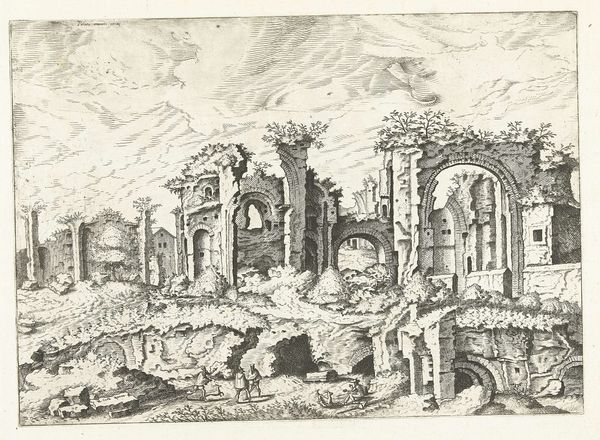
engraving
#
baroque
#
landscape
#
figuration
#
line
#
history-painting
#
engraving
Dimensions: height 246 mm, width 350 mm
Copyright: Rijks Museum: Open Domain
Editor: This engraving, "Antieke ruines met graf plunderaars en palmboom," from 1739-1740 by Giuliano Giampiccoli at the Rijksmuseum, is so detailed. I am drawn to how the figures seem small and fleeting compared to the imposing ruins, suggesting the transience of human life against the backdrop of history. What strikes you most about this piece? Curator: I see in this engraving the intersection of labor and value. Look at the "graf plunderaars," not romantic heroes, but workers dismantling the past for immediate gain. Giampiccoli renders them meticulously, their efforts contrasting sharply with the decaying grandeur surrounding them. He compels us to consider what happens to material culture through human interaction over time. How do you think the choice of engraving, a readily reproducible medium, affects its message about access to and ownership of the past? Editor: That's fascinating. It feels like the print itself is implicated in a kind of "plundering," democratizing the image of these ruins and distributing it for consumption. Are you suggesting that this print is, in a way, complicit in the same activities it depicts? Curator: Precisely. It forces us to think about how artistic production and the creation of images – through laborious engraving processes – contribute to the broader market surrounding history and culture. The past is being literally broken down for labor and then repurposed for profit. What stories do you think these discarded objects may hide? Editor: So it becomes about more than just the romantic ruin. It is about the active destruction, redistribution, and the commodification of history through material processes and artistic means. Curator: Indeed. We start seeing the whole social apparatus embedded in every line of the work. The relationship between creation and ruin and value. Editor: That gives me a completely different perspective; thank you for pointing that out! I never would have considered how the act of creation mirrors, or even contributes to, the very scene it depicts.
Comments
No comments
Be the first to comment and join the conversation on the ultimate creative platform.
